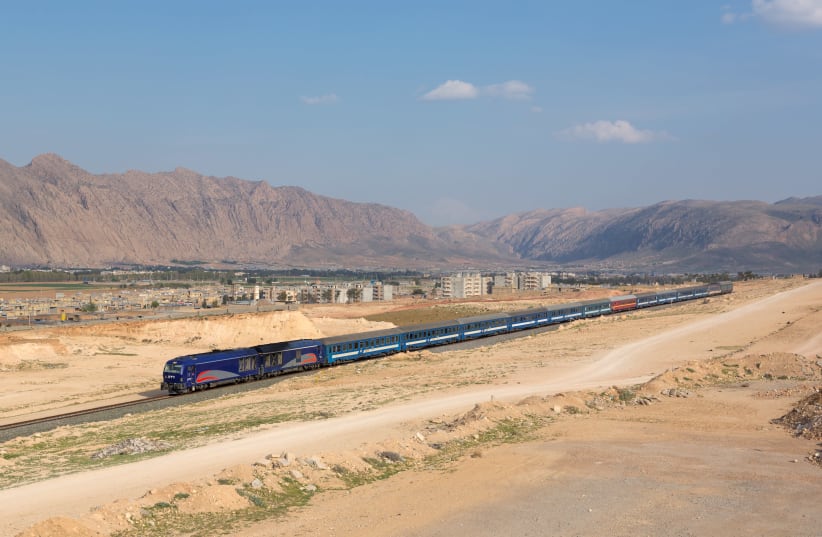Iran has been stagnated by failed railway schemes for many years, according to an article in Tasnim News. The article explores why foreign planners, particularly the British, allegedly sought for Iran to have a north-south railway network that was strategic, but not helpful for international trade. The article may reflect continued distrust of foreign and Western interests and seek to blame the colonial era for the country’s problems, but it is an insight into Iranian government thinking today on this issue.
Ostensibly the article is about the historic Iranian railway projects prior to the 1979 Islamic Revolution. Some 1,400 km. of Iranian railway from Bandar Rokaman on the Caspian to the Persian Gulf were opened in 1939. This was during the reign of Reza Shah Pahlavi. This was an important element of modernization. An article at UNESCO notes that the “railway can be regarded as a turning point for comprehensive developments in Iran.”
“These developments include a wide spectrum of various economical, commercial, social, cultural and even political aspects in a sensitive and important period of contemporary world history. Under the Pahlavi regime, the process of moving toward modernism gained momentum and railway became the main pedestal of development in Iran. Consequently, the 1,394-kilometers long Trans-Iranian Railway was built with a width of 1435 mm. and 90 working stations along its route.”
In January, an article at The Atlantic Council noted that a new railway was launched in December 2020 linking Iran to Afghanistan. Some 140 km. of track were built. “The project represents a major step toward increasing Afghan-Iran trade and opening landlocked Afghanistan to the rest of the world through the Iranian port of Chabahar. Iran paid for the $75 million project as part of development assistance to Afghanistan following the overthrow of the Taliban regime in 2001.”
Once completed, the 225-km. Khaf-Herat network would help transport six million tons of goods and up to a million passengers annually. As part of a larger East-West Railway Corridor extending to China and Europe, the new railway track consists of four sections, three of which were funded and developed by Iran. The last section to Herat is about 80% done and is being financed by Italy, the article notes.
Mohammad Mosaddegh was a critic of the railways projects. While prime minister in the early 1950s before being overthrown, he was a key political commentator on Iran in the 1940s era. He argued, according to the Tasnim article, that the railway constructed in the 1930s actually facilitated British domination of Iran, as opposed to serving the country’s interests. A railway in these circumstances was a kind of “hell” for Iran. Of more interest to Iran would have been a railway from Zahedan near the Afghan and Pakistan border, to Isfahan and then up toward Turkey and Europe. It could have been connected to Arak and Kermanshah cities.
Why does this matter today? Because Iran is trying to rapidly increase its economic abilities and to facilitate itself as a key to a wider network of countries such as Turkey, Russia and China that will balance any demands from the US. In this network, Iran can seek to be part of the emerging multi-polar world of near peer adversaries for the US.
An article at Hellenic Shipping News also notes that Iran is “developing a railroad project to connect the Rasht-Qazvin railway to Anzali and Astara ports. Another line is also under construction which will link Rasht to Caspian port.” The article notes that “once the project is complete, Caspian port will become the largest hub in northern Iran and make a major contribution to national and local economic development. The route will connect Iran with Russia’s Baltic ports and give Russia rail connectivity to both the Persian Gulf and the Indian rail network.”
This has wider implications as well. India is watching closely because of interest in Iran’s Chabahar port. India is not part of the Chabahar-Zahedan railway at present, the Hindu notes, but as “Iran begins the second phase of the 628km project, Tehran hopes New Delhi will help it procure equipment.” This means the discussion of the railways should be seen in the light of Iran’s wider ambitions. Perhaps many decades after Iran’s first rail lines were put in place, the country will finally have a network that suits its strategic needs. That, at least, is the message Tasnim wants to convey.
